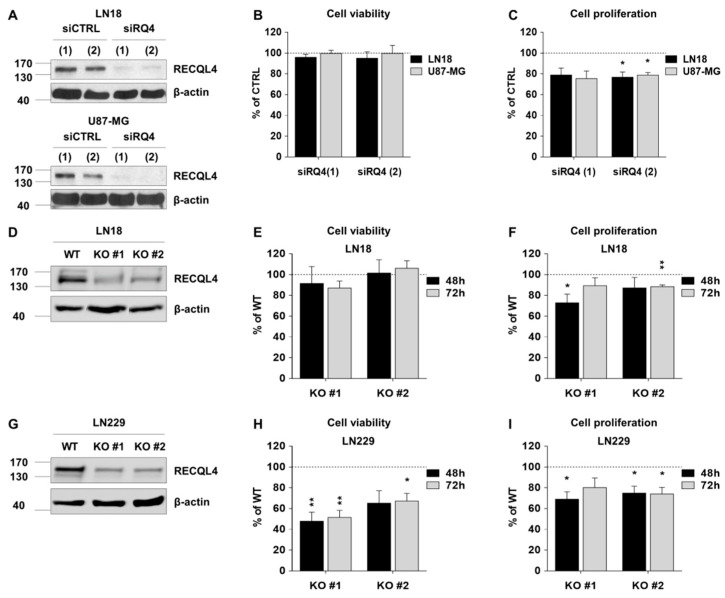Figure 2.
RECQL4 depletion affects cell viability and proliferation of certain glioblastoma cells. (A) Representative immunoblots showing effective knockdown of RECQL4 (48 h post-transfection) with two different siRNAs (siRQ) in LN18 (upper panel) and U87-MG (bottom panel) cells. β-Actin was used as a loading control. Viability (B) and proliferation (C) of LN18 and U87-MG 48 h post-transfection was assessed by MTT metabolism and BrdU incorporation tests, respectively. The results were normalized to cells transfected with the non-targeting control siRNA (siCTRL) and represent the mean ± SEM (n = 4). Statistical significance was determined with by two-tailed t-test; statistically significant when * p < 0.05. (D,E) Representative immunoblots show knockout of RECQL4 by CRISPR/Cas9 in two independent clones (RECQL4 KO #1 and KO #2) of LN18 and LN229 cells. Viability (G,H) and proliferation (F–I) of LN18 or LN229 cells were assessed 48 h and 72 h after seeding as described above. The results were normalized to wild type (WT) cells and represent the mean ± SEM of four independent experiments. Statistical significance was determined by one sample t-test; significant when * p < 0.05, ** p < 0.01.

